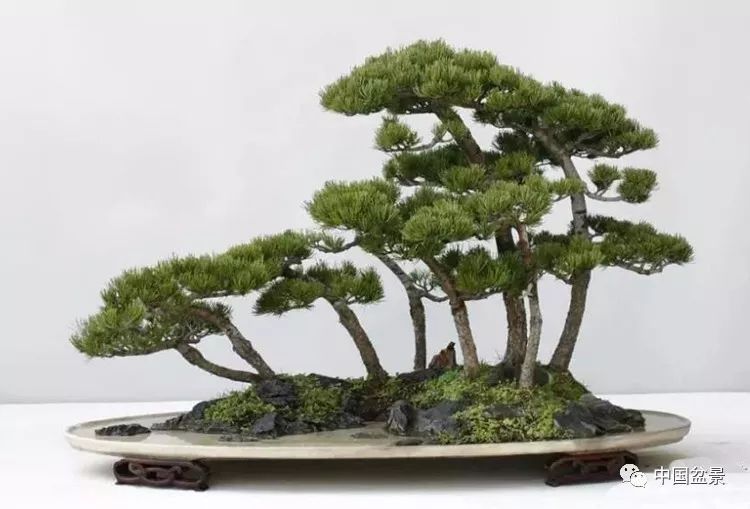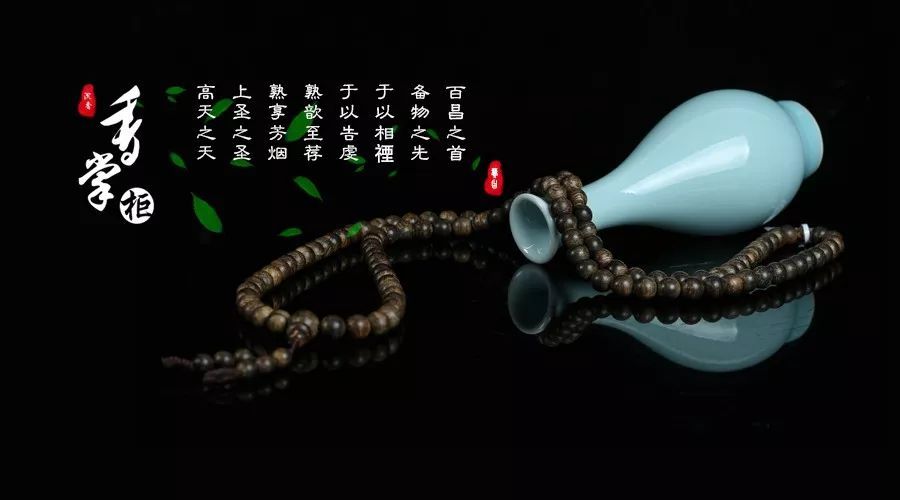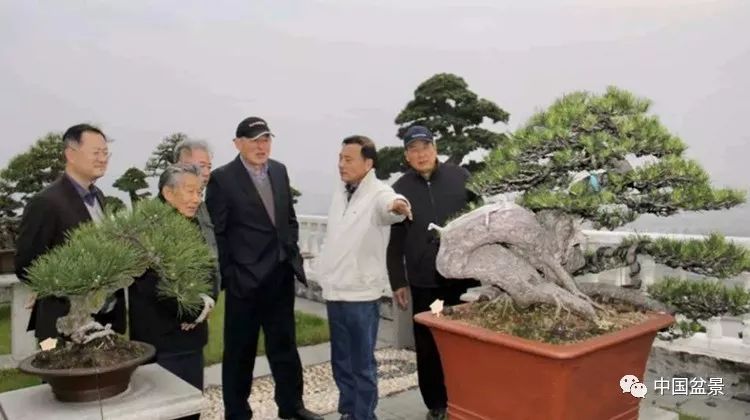Zhao Qingquan: keeping the Root of National Culture of Bonsai

Keep the root of national culture of bonsai
On the inheritance and Innovation of Bonsai
Original author | Zhao Qingquan
This article is recommended by Li Guobin and selected from "Poon Art". The copyright belongs to the original creator Zhao Qingquan.
The inheritance and innovation of bonsai is an old topic, and many bonsai people have expressed reasonable views on it. However, in view of the current reality of the development of domestic bonsai, I think it is necessary to continue to explore.
Bonsai is an ancient traditional art in China. Like other cultures and arts, bonsai is gradually produced and perfected under the comprehensive influence of certain social and economic conditions, cultural thoughts and other factors. In the past 30 years, with the development of social economy, the progress of Chinese bonsai is unprecedented, the team of enthusiasts is unprecedentedly strong, and the skill level is significantly improved. At the same time, the problems of its inheritance and innovation are becoming more and more prominent.
The inheritance mentioned here, first of all, is to activate the valuable resources in the traditional bonsai culture and make it the source of today's bonsai; innovation means to create works with the characteristics of the new era and in line with the aesthetic taste of modern people on this basis, and spread through the context of globalization, making it an organic part of the world bonsai culture.
Bonsai originated in China, it is no accident, it is caused by the broad and profound Chinese culture. Today's bonsai is based on the tradition left by our predecessors. without this foundation, we have to start from scratch. Therefore, innovation is inseparable from the foundation of tradition, and we should cherish and inherit the excellent tradition and seek a breakthrough in innovation, instead of applying "subversive innovation".
To inherit bonsai art, we must first understand what is tradition. Due to various reasons, there are few ancient bonsai in our country, and the only ones are not necessarily the original appearance. But we can know what ancient Chinese bonsai looked like from a large number of descriptions of ancient poems and paintings. From the beginning of its birth, bonsai is an art form dominated by Chinese literati, with poetic and picturesque natural modeling as the mainstream. Even if it is regular modeling, it can be used for reference in artistic techniques, such as the treatment of space, the use of lines, the performance of levels and so on.
The inheritance of bonsai art is not limited to bonsai itself. The traditional culture of the Chinese nation is broad and profound, and its three main philosophical systems-Confucianism, Taoism and Zen-have a profound impact on all kinds of art, including bonsai, and should draw nourishment from the whole traditional culture. Chinese poetry, literature, painting, calligraphy, sculpture, gardens, music and dance can be used for reference, especially landscape painting and its theory can be used as a reference for bonsai art.
The innovation of bonsai art should be the combination of traditional culture and modern ideas. While inheriting the tradition, we must be in the society, well-informed, experience the flavor of the times, and keep up with the pace of the times in order to produce the aesthetic standards and tastes of the new era, and abandon the old stereotypes and fixed patterns.
For the innovation of bonsai art, we must deeply observe the landscape and trees of nature, absorb wisdom from the ever-changing natural landscape, trigger inspiration, and find a natural basis for bonsai creation.
The innovation of bonsai art should reflect the author's personality. Art is the most taboo of similarity. with the enrichment of modern cultural life, stylized and thousands of works are becoming more and more unpopular. The author "himself" must be infiltrated into the work in the creation to reach the level of seeing the work like seeing the person.
The innovation of bonsai art should be eclectic under the premise of Chinese culture, learn the good technology of foreign bonsai, learn from its means of expression and forms of expression, in order to enrich our national bonsai art. Art knows no national boundaries, and advocating "go your own way and win with national characteristics" does not mean excluding learning from abroad.
Only when a tree has a good foundation can its branches and leaves grow well. The same is true of bonsai. Only by keeping the root of national culture can we have strong vitality. Look forward to bonsai people to work together to make China, a big bonsai country, become a bonsai power as soon as possible.
Title: enter the cloud
Specification (cm): 132
Tree species: true cypress
Author: Zhao Qingquan
Title: gazing
Specification (cm): 105
Tree species: black pine
Author: Zhao Qingquan
Selected messages:
@ stainless steel (Liu Chuangang):
This is a good article worthy of serious study by all bonsai people: concise, reasonable, simple and practical, which is not only the experience of teacher Zhao Qingquan's bonsai creation and practice for decades, but also the correct guidance for the development direction of today's bonsai field, which has strong practical pertinence and guiding significance. Sincerely like Miss Zhao.
@ Airport:
Keeping the root of the national culture of bonsai should be the original intention of Chinese bonsai people. As a Chinese, there is no reason not to follow your own national road. The classics and splendid philosophies created by Chinese culture have educated generations of Chinese people. Teacher Zhao is a model for us to learn. His works are poetic and picturesque and always contain the soul of the nation.
Poetic painting is not so much the foundation of Chinese bonsai traditional culture and art as the inevitable trend of the development of bonsai art in the world.
It is believed that China will certainly develop into a world bonsai power.
@ Shanke Cottage (Liu Zhiyun):
Miss Zhao said well! Each bonsai should have the creator's personal thoughts, not blindly imitate the master's works, without personal thoughts, and become a soulless imitation.
@ Pumu Old Age (Lianyungang Morning Garden):
Teacher Zhao's article is that we bonsai people must deeply understand its meaning. If bonsai people do not study carefully and understand this article, they will take detours on the road of creating and producing bonsai and will not create good works.
@ Xu Guofu:
In the process of innovating and developing Chinese potted art, creators should learn and absorb Chinese traditional culture in many aspects and disciplines. Only then can the heaven and earth in the basin be wide, and the artistic conception will be born with the heart, and it will become a scene at will, and Fu will show its mind! Teacher Zhao Qingquan came to the most fundamental point! Like Miss Zhao.
@ Zhao Qingquan:
Thank you for your encouragement! In fact, what is mentioned in this article is not only my personal point of view, but also contains the achievements of our discussion on bonsai theory over the years.
Wonderful playback:
Welcome to Chinese bonsai!
Bonsai exhibition hall that can be enjoyed at any time
Carry forward bonsai culture and exchange bonsai skills!
Enjoy bonsai art and share a happy life!
- Prev

What happened to people who wear Chenxiang for a long time?
It has been scientifically confirmed that: people raise strings for three years, and they often play hand strings all their lives. Hand string fans all know that playing hand strings for a long time can promote hand blood circulation, regulate metabolism and promote cell regeneration.
- Next

The teacher also mourns that Lord Hu's voice and smiling face are still there.
The teacher also mourned Hu Gong's voice and smile. Today, the copyright of "Bonsai Bonsai and Stone appreciation" belongs to the original author. I have known Master Hu Leguo for nearly 30 years. I was surprised to learn that Mr. Hu Leguo's treatment was invalid due to illness in 2018.
Related
- Wuhan Hospital Iron Tree Blooming Result Was Instantly Frightened by the Gardener Master
- Which variety of camellia is the most fragrant and best? Which one do you like best?
- What is the small blue coat, the breeding methods and matters needing attention of the succulent plant
- Dormancy time and maintenance management of succulent plants during dormancy
- Minas succulent how to raise, Minas succulent plant pictures
- What are the varieties of winter succulent plants
- How to raise succulent plants in twelve rolls? let's take a look at some experience of breeding twelve rolls.
- Attention should be paid to water control for succulent plants during dormant period (winter and summer)
- Watering experience of twelve rolls of succulent plants
- Techniques for fertilizing succulent plants. An article will let you know how to fertilize succulent plants.

